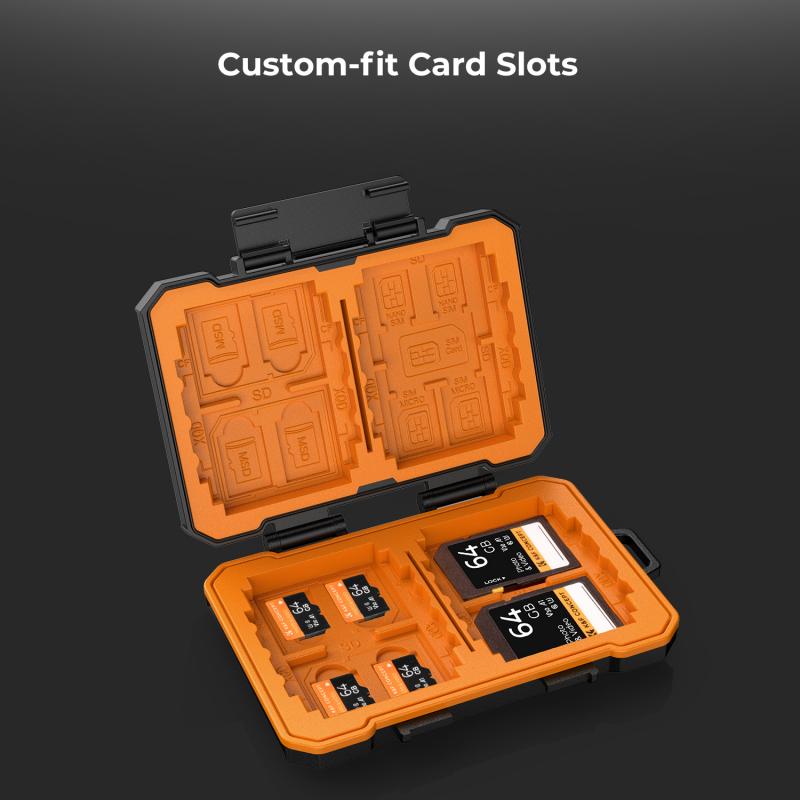How Much Do Micro Sd Cards Cost?
In today's digital age, storage solutions are more critical than ever. Whether you're a professional photographer, a smartphone user, or someone who loves to store a plethora of media files, micro SD cards have become an indispensable tool. They offer a convenient and portable way to expand storage capacity on various devices. However, one common question that arises is: "How much do micro SD cards cost?" This article aims to provide a comprehensive guide to understanding the cost of micro SD cards, the factors that influence their prices, and how to make an informed purchase decision.
Understanding Micro SD Cards
Before diving into the cost, it's essential to understand what micro SD cards are and their primary uses. Micro SD cards are a type of removable flash memory card used for storing information. They are commonly used in smartphones, tablets, cameras, drones, and other portable devices. The "micro" in micro SD refers to their small size, making them ideal for compact devices.
Factors Influencing the Cost of Micro SD Cards
Several factors influence the cost of micro SD cards. Understanding these factors can help you make a more informed decision when purchasing one.
1. Storage Capacity
The most significant factor affecting the price of a micro SD card is its storage capacity. Micro SD cards come in various capacities, ranging from 2GB to 1TB. Generally, the higher the storage capacity, the more expensive the card. For instance, a 32GB micro SD card will be significantly cheaper than a 256GB or 512GB card.
2. Speed Class and Performance
Micro SD cards are also categorized based on their speed class, which indicates how quickly data can be read from or written to the card. The speed class is crucial for tasks that require fast data transfer, such as recording high-definition videos or running applications directly from the card. The common speed classes are Class 2, Class 4, Class 6, and Class 10, with Class 10 being the fastest. Additionally, there are UHS (Ultra High Speed) classes like UHS-I, UHS-II, and UHS-III, which offer even higher speeds. Cards with higher speed classes tend to be more expensive.
3. Brand and Quality
The brand and quality of the micro SD card also play a significant role in its cost. Well-known brands like SanDisk, Samsung, Kingston, and Lexar often charge a premium for their products due to their reputation for reliability and performance. Cheaper, no-name brands may offer lower prices, but they often come with risks such as lower durability, slower speeds, and a higher chance of data corruption.
4. Additional Features
Some micro SD cards come with additional features that can affect their price. For example, some cards are designed to be waterproof, shockproof, and temperature-proof, making them more durable and suitable for extreme conditions. Others may come with built-in security features like encryption. These additional features can add to the cost of the card.
Price Range of Micro SD Cards
Given the factors mentioned above, the price of micro SD cards can vary widely. Here is a general price range based on storage capacity and speed class:
- 2GB to 16GB: These lower-capacity cards are generally the cheapest, ranging from $5 to $15. They are suitable for basic tasks like storing documents and low-resolution photos.
- 32GB to 64GB: These mid-range cards typically cost between $10 and $30. They are ideal for most smartphone users and can store a decent amount of photos, videos, and apps.
- 128GB to 256GB: These higher-capacity cards range from $20 to $70. They are suitable for users who need to store large amounts of data, such as high-definition videos and large applications.
- 512GB to 1TB: These top-tier cards are the most expensive, ranging from $70 to $300 or more. They are ideal for professional photographers, videographers, and anyone who needs massive storage capacity.
Making an Informed Purchase

When purchasing a micro SD card, it's essential to consider your specific needs and how you plan to use the card. Here are some tips to help you make an informed decision:
1. Assess Your Storage Needs
Determine how much storage you need based on your usage. If you primarily use your card for storing documents and photos, a lower-capacity card may suffice. However, if you plan to store high-definition videos or run applications from the card, you may need a higher-capacity card.
2. Consider the Speed Class
Choose a card with an appropriate speed class for your needs. If you need to record high-definition videos or run applications, opt for a Class 10 or UHS card. For basic storage needs, a lower speed class may be sufficient.
3. Check Compatibility
Ensure that the micro SD card is compatible with your device. Some devices may not support higher-capacity cards or specific speed classes. Check your device's specifications before making a purchase.
4. Buy from Reputable Brands
While it may be tempting to save money by purchasing a cheaper, no-name brand, it's generally safer to buy from reputable brands known for their quality and reliability. This can help you avoid issues like data corruption and card failure.
5. Look for Deals and Discounts
Keep an eye out for deals and discounts, especially during sales events like Black Friday, Cyber Monday, and back-to-school sales. You can often find high-quality micro SD cards at reduced prices during these times.
The cost of micro SD cards varies widely based on factors such as storage capacity, speed class, brand, and additional features. By understanding these factors and assessing your specific needs, you can make an informed purchase decision that provides the best value for your money. Whether you need a basic card for storing documents or a high-capacity, high-speed card for professional use, there's a micro SD card out there that fits your requirements and budget.

